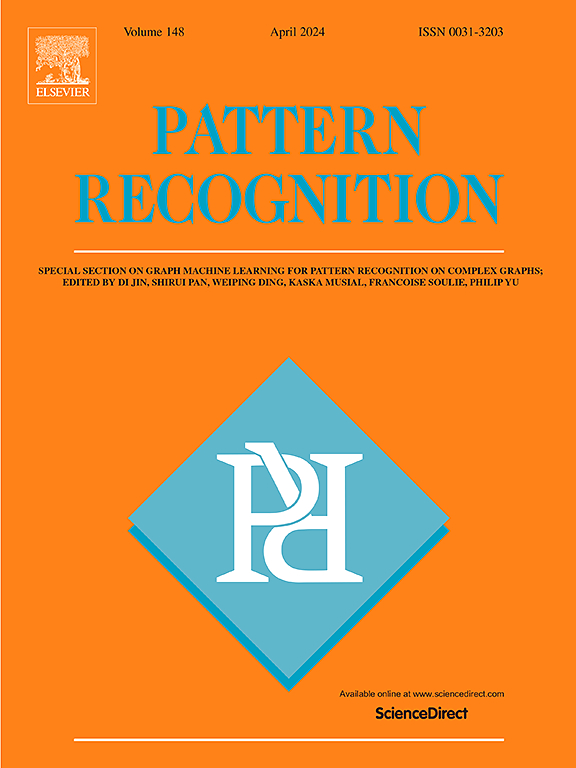多任务动态图学习在脑功能磁共振识别中的应用
IF 7.5
1区 计算机科学
Q1 COMPUTER SCIENCE, ARTIFICIAL INTELLIGENCE
引用次数: 0
摘要
基于静息状态功能磁共振成像(rs-fMRI)的动态功能连接(FC)分析被广泛应用于脑疾病的自动诊断。大量的动态FC分析方法依赖于滑动窗口技术从局部时间段提取大脑活动的时变特征。然而,这些方法对窗口参数和个体差异敏感,导致提取的特征差异较大,影响了疾病分类的稳定性和准确性。此外,虽然动态图学习在建模时变大脑网络方面有希望,但现有方法在有效捕获时空动态信息方面仍然遇到困难。因此,本文提出了一个多任务动态图学习框架(mtdgl)来对齐FC轨迹并学习脑疾病识别的时空动态信息。MT-DGL主要包括三个部分:(1)基于spd值的FC轨迹对齐模块,克服了模型对滑动窗口参数的依赖,减轻了个体间执行速度的非同步性影响;(2)基于mamba的多尺度动态图学习模块,从fMRI时间序列中提取时空动态特征;(3)多尺度融合和多任务学习策略,增强模型对年龄相关脑FC变化的理解,提高脑障碍识别的有效性。实验结果表明,该方法在多个公开可用的fMRI数据集上表现出优异的性能。具体而言,在ABIDE数据集中最大的站点上,曲线下面积和精度分别达到73.9%和74.9%。本文章由计算机程序翻译,如有差异,请以英文原文为准。
Multi-task dynamic graph learning for brain disorder identification with functional MRI
Dynamic functional connectivity (FC) analysis based on resting-state functional magnetic resonance imaging (rs-fMRI) is widely used for automated diagnosis of brain disorders. A large number of dynamic FC analysis methods rely on sliding window techniques to extract time-varying features of brain activity from localized time periods. However, these methods are sensitive to window parameters and individual differences, leading to significant variability in the extracted features and impacting the stability and accuracy of disease classification. Additionally, while dynamic graph learning holds promise in modeling time-varying brain networks, existing methods still encounter difficulties in effectively capturing spatio-temporal dynamic information. Therefore, in this paper we propose a multi-task dynamic graph learning framework (MT-DGL) to align FC trajectories and learn the spatio-temporal dynamic information for brain disease recognition. The MT-DGL mainly includes three parts: (1) SPD-valued FC trajectory alignment module for overcoming the model’s dependence on sliding window parameters and mitigating the impact of asynchrony in execution rates across individuals, (2) Mamba-based multi-scale dynamic graph learning module for extracting spatio-temporal dynamic features from fMRI time series, and (3) multi-scale fusion and multi-task learning strategy to enhance the model’s understanding of age-related brain FC changes and improve the effectiveness of brain disorder identification. Experimental results indicate that the proposed method exhibits excellent performance in several publicly available fMRI datasets. Specifically, on the largest site in the ABIDE dataset, the accuracy and area under the curve reached 73.9% and 74.9%, respectively.
求助全文
通过发布文献求助,成功后即可免费获取论文全文。
去求助
来源期刊

Pattern Recognition
工程技术-工程:电子与电气
CiteScore
14.40
自引率
16.20%
发文量
683
审稿时长
5.6 months
期刊介绍:
The field of Pattern Recognition is both mature and rapidly evolving, playing a crucial role in various related fields such as computer vision, image processing, text analysis, and neural networks. It closely intersects with machine learning and is being applied in emerging areas like biometrics, bioinformatics, multimedia data analysis, and data science. The journal Pattern Recognition, established half a century ago during the early days of computer science, has since grown significantly in scope and influence.
 求助内容:
求助内容: 应助结果提醒方式:
应助结果提醒方式:


